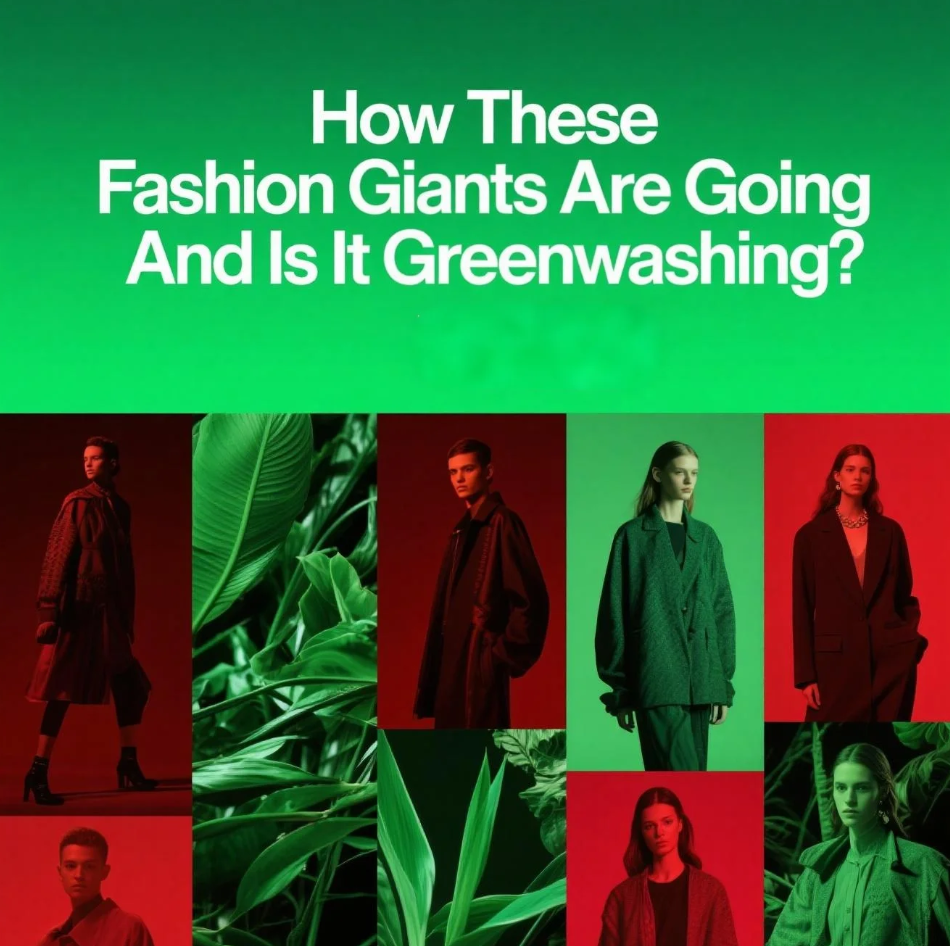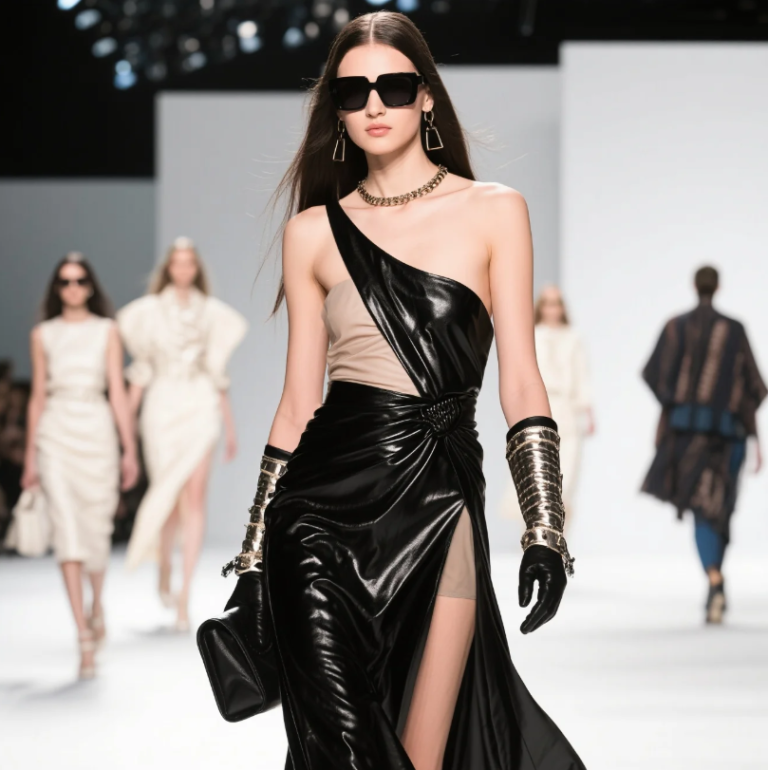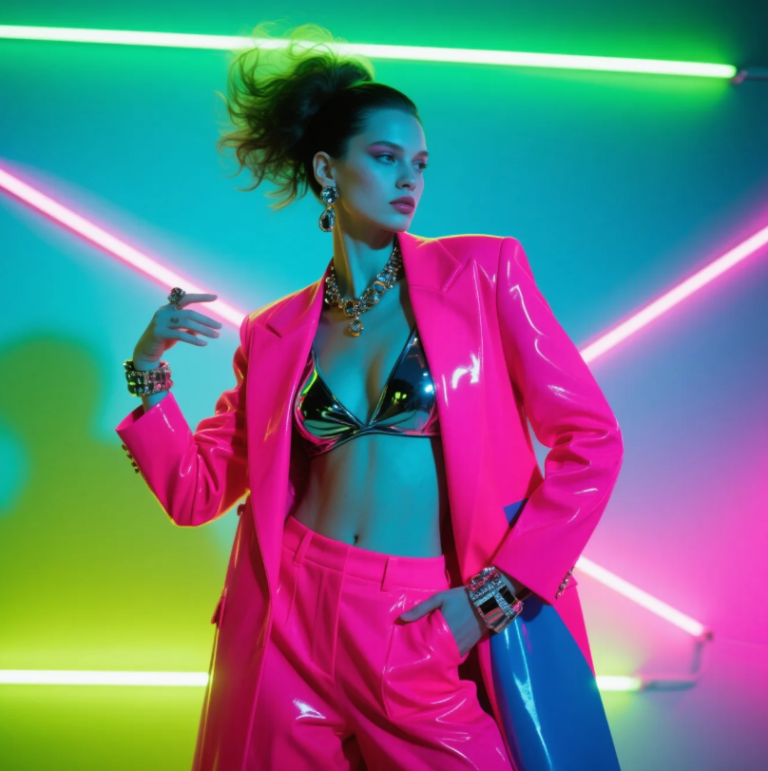
The world of fashion is spinning on a new axis. Sustainability is now the hot topic on every fashion executive’s agenda, plastered across marketing campaigns and whispered through the sleek corridors of high-end design houses. But here’s the burning question: Are these so-called sustainable fashion efforts genuine progress or a sophisticated form of greenwashing?
The Green Revolution in Fashion
The fashion industry has long been one of the most polluting sectors globally. From excessive water usage and carbon emissions to unethical labor practices, its negative impacts are hard to ignore. Now, as consumers become more environmentally conscious, brands are racing to rebrand themselves as eco-warriors.
Household names like H&M, Zara, Nike, and Gucci have launched sustainability lines or claimed commitments to ethical sourcing and carbon neutrality. But the devil, as always, is in the details.
Who’s Leading the Charge?
H&M
H&M introduced its “Conscious Collection,” featuring garments made with organic cotton, recycled polyester, and other sustainable materials. The company also launched a garment collection program, encouraging customers to recycle old clothes.
Yet critics argue that H&M’s core business model, based on fast fashion and rapid turnover, fundamentally contradicts sustainability. Producing millions of garments a year, the brand still fuels overconsumption.
Zara (Inditext Group)
Zara’s parent company, Inditex, has promised to make all of its collections from sustainable or recycled materials by 2025. The brand has introduced eco-efficient stores and aims to cut emissions significantly across its supply chain.
However, the question remains whether a company thriving on quick trends can truly be eco-friendly. Are recycled fabrics enough to offset the sheer volume of production?
Nike
Nike has invested in sustainable innovation, launching products made with recycled materials under its “Move to Zero” initiative. Its Space Hippie sneakers, for example, boast the lowest carbon footprint of any Nike shoe to date.
Still, some question whether such isolated efforts are enough. For a company that manufactures in bulk and relies heavily on global logistics, a few green products may not counterbalance the broader environmental impact.
Gucci
Gucci has taken bold steps by going carbon neutral, launching environmentally-friendly collections, and eliminating fur from its designs. The company has embraced transparency by publishing an Environmental Profit and Loss (EP&L) statement.
While Gucci appears more committed than most, skeptics highlight that luxury fashion’s reliance on rare animal products and limited-edition hype can also drive unsustainable demand.
What Exactly Is Greenwashing?
Greenwashing occurs when companies exaggerate or falsely claim environmentally-friendly practices to attract conscious consumers. It often involves vague language, selective disclosures, or misleading imagery to give the illusion of sustainability.
Common signs of greenwashing include:
- Buzzwords like “eco-friendly,” “green,” or “natural” without clear definitions
- Lack of third-party certifications
- Ambiguous sustainability goals without timelines or measurable targets
- Promoting minor green initiatives while ignoring larger harmful practices
Greenwashing in Action: Real-Life Examples
In 2020, the Changing Markets Foundation published a report titled “Fashion’s Hidden Pollution,” exposing how many fashion brands, including H&M and Zara, used green labels while sourcing from polluting factories in Asia. Despite marketing recycled content, their supply chains remained opaque and problematic.
Another example: Boohoo, a fast-fashion brand, launched a “Ready for the Future” collection marketed as sustainable. However, investigative journalists found that many of the items in the collection used minimal recycled content, and the company offered no evidence of meaningful environmental improvements.
Why It Matters
The implications of greenwashing go beyond misleading advertisements. It fosters complacency, delaying the systemic changes the industry urgently needs. When consumers believe they are making ethical choices but are being misled, it undermines genuine efforts by truly sustainable brands.
Moreover, greenwashing dilutes the credibility of sustainability as a whole. If everyone claims to be green, how can consumers distinguish between real progress and empty promises?
How to Spot Genuine Sustainability
As a consumer, here are ways to cut through the noise:
- Check for Certifications: Look for trusted third-party labels such as GOTS (Global Organic Textile Standard), Fair Trade, or Bluesign.
- Transparency: Genuine brands share their supply chain data, labor practices, and environmental impact reports.
- Material Details: Specifics matter. Vague claims about “better materials” should be backed by facts.
- Lifecycle Consideration: Responsible companies consider the entire lifecycle of a garment, including how it’s disposed of.
- Slower Fashion: Brands that focus on quality, durability, and timeless designs rather than trends are often more sustainable.

The Role of Consumers
Consumers hold significant power. The choices we make can either fuel or fight the culture of disposable fashion. By asking tough questions, supporting responsible brands, and reducing unnecessary purchases, individuals can drive demand for genuine change.
The Path Forward: Real Change or Marketing Gimmick?
The shift toward sustainability in fashion is not entirely smoke and mirrors. Some companies are indeed investing in cleaner technologies, circular fashion models, and fair labor practices. However, the scale and speed of transformation often lag behind the urgency of the climate crisis.
Governments, too, are stepping in. France has introduced laws requiring fashion labels to disclose the environmental impact of products. The EU is working on legislation that could fine companies for false sustainability claims.
Still, regulation remains sparse globally, and enforcement is weak. In this vacuum, brands can exploit the green narrative without meaningful accountability.
A Fashionable Facade?
The green wave sweeping through fashion is, at best, a mixed bag. While some brands take tangible steps toward sustainability, many others ride the trend for PR mileage. The line between genuine effort and greenwashing is often blurry, but not invisible.
To avoid being deceived, consumers must stay informed and skeptical. True sustainability isn’t just a marketing campaign; it’s a radical shift in how fashion is designed, produced, sold, and worn.
As the industry marches toward a more sustainable future, one question remains: will fashion giants walk the walk, or will they just keep dressing up the problem?
One thing is certain—green is the new black, but not all that glitters is ethical gold.


